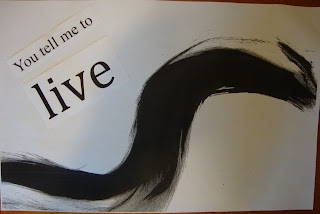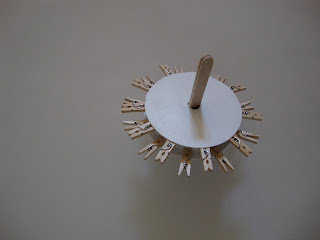My module got critiqued today. Mark and Juston were in charge of critiquing it and they said they like how one half is angular and the other half is smooth because it shows the differences.
The board I used only had one coat of spray paint, which made it look more like the natural ground.
They didn't like the fact that one of my legs is facing the away from the viewer, and two of my shorter legs weren't bent together like the rest, and this bothered them a bit.
The legs to my piece work well with it because they are playful and are used from bottle caps as well.
Some people liked how I used the gold bottle caps in the center of the piece, but some said it would have been better if I spread them out more and did a little sections at a time.
If I could go back, I would fix the two little legs to make them look like the rest, or maybe just face the other towards the viewer. I would also do one more section of gold caps on the middle loop to make it look more even.






























































